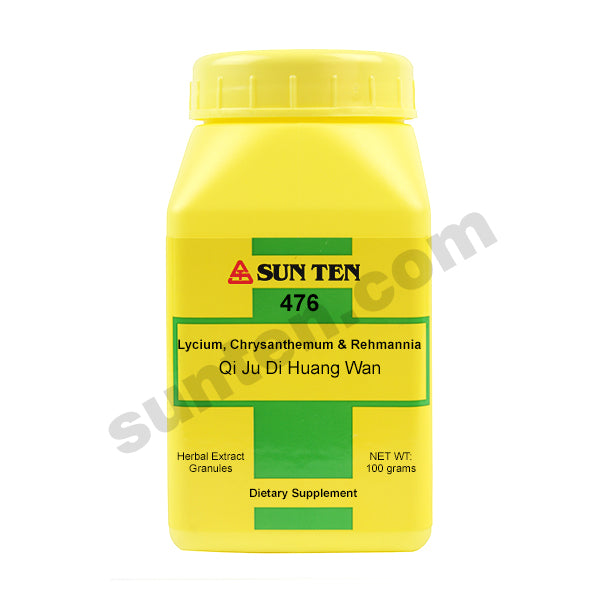Qi Ju Di Huang Wan
Lycium, Chrysanthemum & Rehmannia Formula Granules | 杞菊地黃丸
Practitioners: Please LOGIN to view the wholesale price. This item can only be purchased by a licensed practitioner. Find a practitioner
Ingredients: Rehmannia cured root tuber (shu di huang), Chinese yam rhizome (shan yao), Asiatic dogwood fruit without seed (shan zhu yu), Poria sclerotium (fu ling), Tree peony root bark (mu dan pi), Asian water plantain rhizome (ze xie), Lycium fruit (gou qi zi), Chrysanthemum flower (ju hua).
| Mandarin: 杞菊地黃丸 Pin-Yin: Qi Ju Di Huang Wan English: Lycium, Chrysanthemum, & Rehmannia Formula Romaji: Kokiku Jio Gan Kanji: 杞菊地黄丸 Kampo: No |

